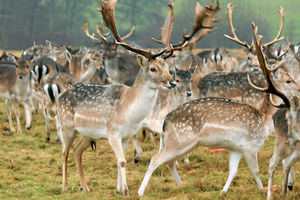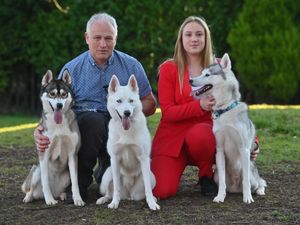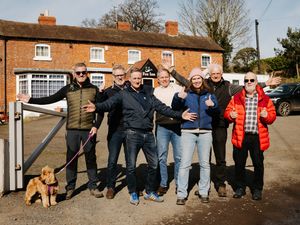Dangers of wild deer on our roads
It's boom time for the UK's wild deer population. These shy and elusive beasts are now more abundant in our woodlands, fields and even towns than at any time in the last thousand years.

The presence of such charismatic, relatively harmless animals in the Shropshire countryside should be cause for celebration, but campaigners fear the ever-expanding population could be posing a threat to our environment and safety.
The UK boasts two native species – the large and impressive 'red' and the diminutive 'roe'.
Fallow deer were introduced by the Normans in the 11th century, and a further three species – the sika, Reeves's muntjac and the Chinese water deer – have arrived in the last 150 years.
Leafless February landscapes provide the best opportunity to glimpse deer . . . usually as they rocket off into the woods at high speed.
Anyone who regularly passes the grounds of Aqualate, near Newport, Attingham Park, on the outskirts of Shrewsbury, or drives over the top of Haughmond Hill, will probably have had a close encounter with the deer along the roadside at some time. The Mortimer Forest in Ludlow, and The Wrekin, are other local havens.
Despite their shy nature, there is a huge number of deer at large. Conservative estimates now place the UK deer population at around 1.5 million, but two million is seen as a more realistic figure.
The reason for this is quite simple – there's nothing lurking in our countryside that's big enough to eat them.
Laura Drake, from The Mammal Society, explains: "Humans removed all larger carnivore species from these islands between 1,000 to 8,000 years ago, including the wolf, lynx, wolverine and brown bear. They kept control of species such as deer, which in their absence have since exploded through our woodland due to a lack of natural population controls."
This direct interaction between people and deer is where the first problem arises – deer-vehicle collisions.
Deer could be responsible for as many as 74,000 car accidents in the UK annually, according to statistics, with many human injuries and a handful of fatalities each year.
Some months back, the issue reached the Shropshire council chamber due to the number of collisions and near misses in the Leighton and Eaton Constantine areas.
Estate owners had to step in and cull some of their herds, after residents voiced fears that someone was going to be seriously hurt.
Sales representative Peter Amos from Church Stretton commutes to Birmingham on a regular basis, and says: "You see the red triangular signs with deer on, but never really expect to see them on the road. That's changed recently. I'd been driving for years without having any problems, but have had three near-misses since the start of last year. You definitely see more deer than you used to."
Various strategies have been trialled across the UK, including roadside optical sensors and other warning devices. But they have been largely ineffective. Fencing can help to funnel deer to a safe crossing point, but is expensive to install and maintain, unsightly, and may trap deer on the roadside.
The Highways Agency says deer are at nearly 'insupportable levels' in some areas, and believes the most effective strategy to reduce road incidents in hotspots is to increase the deer cull and raise driver awareness. The other key problem with deer is environmental damage, a crime not normally associated with gentle herbivores. But deer can inflict untold damage to our most important wildlife sites as they forage and scratch off the velvet covering from their antlers.
The two key culprits are fallow and muntjac, whose browsing can remove rare plant species and shrub layer vegetation which is vital for ground nesting birds, dormice, moths, butterflies and other insects.
A spokeswoman from government wildlife agency Natural England explains: "We do have concerns about increasing deer populations. About 1,000 Sites of Special Scientific Interest have some woodland interest, covering about 11 per cent of the total forest resource in England. Of these sites, more than one-third has suffered from high deer browsing, to a point where Natural England judged them to be in poor condition."
The farming community is also concerned. The grazing and trampling of crops by deer costs millions of pounds each year. Farming and environmental damage inflicted by deer can be mitigated with good landscape management, but there is another problem that could threaten the future of the red deer.
Although smaller, sika can breed and fully hybridise with the red, meaning they can produce fertile offspring which could over time dilute the red's gene pool. Laura Drake explains: "The sika population is a threat to the genetic integrity of the red deer.
"Sika control, especially as a non-native species, is and should be implemented wherever the population threatens red deer.
"The Mammal Society's National Mammal Atlas Project will map all species right up to date, and will be able to tell us if sika deer are dispersing any faster."
Have you had an incident, or a near miss, with wild deer on a Shropshire road? Email starfeatures@shrop shirestar.co.uk with your stories – and tell us what you think can be done to solve the problem.





